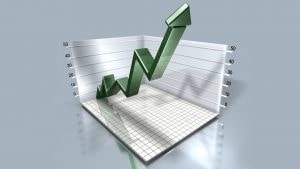The Best Countries for Long-Term Growth

KV Prasad Jun 13, 2022, 06:35 AM IST (Published)
 Listen to the Article (6 Minutes)
Listen to the Article (6 Minutes)
Summary
The Best Countries for Long-Term Growth
Worries over the European debt crisis, a slow recovery in the U.S. and fears over a “hard landing” for China’s economy have left global investors searching for new markets for their money. For long-term investors that means identifying economies that have strong growth prospects driven by advantages such as demographics, natural resources or geography.
The following is a list of the 10 countries with the best prospects for long-term growth. It’s based on a report from HSBC titled “The World in 2050,” which forecasts what the economic landscape will look like over the next 40 years. Some of the economies are already known as economic powerhouses, while others may come as a surprise.
The ranking includes some of the world’s fastest-growing economies as well as those that will have the largest gross domestic product in absolute size by 2050. Excluded are economies that are projected to be less than $400 billion in GDP by 2050. The 2010 and projected 2050 GDP numbers are from the HSBC report and are based on constant U.S. dollar exchange rate in 2000. We calculated the annual average growth rates over the 40-year period based on figures in the report.
Click ahead to find out which countries offer investors the best growth prospects in the next few decades.
10. Algeria
Projected annual growth: 5%
2010 GDP: $76 billion*
2050 projected GDP: $538 billion
Algeria, endowed with Africa’s third-largest proven oil reserves, is one of the richest countries on the continent, and its wealth appears likely to grow further in the coming decades.
Oil reserves of 12 billion barrels have played a key role in luring foreign energy companies, including Anadarko and A.P. Moller-Maersk to the country. Petroleum products, the backbone of the economy, account for 95 percent of Algeria’s exports, according to the International Monetary Fund.
Revenues from its commodities exports have allowed Algeria’s government to accumulate large savings in an oil stabilization fund, estimated to be worth $55 billion, which helped shield the economy from the fall in energy prices in 2009.
An acceleration of household consumption and government fiscal expansion has also helped to boost growth in recent years. In 2009, President Abdelaziz Bouteflika announced a five-year plan to increase government spending from $120 billion to $150 billion to improve national infrastructure, create 3 million jobs, and build 1 million new homes.
Although the country has favorable demographics on its side — with more than half the population under age 35 — the country faces high levels of youth unemployment. Over 20 percent of those in the 16-24 age bracket are unemployed, and Algeria has seen several protests during last year’s Arab Spring.
* Based on 2000 U.S. dollars
9. China
Projected annual growth: 5.1%
2010 GDP: $3.511 trillion*
2050 projected GDP: $25.334 trillion
It may be no surprise that China, the current engine of global growth, is set to be one of the fastest growing economies over the next four decades. But what is noteworthy is that the size of mainland economy, which is currently one-third that of the United States, is expected to grow more than seven-fold to overtake the U.S. by 2050.
It is no wonder that foreign companies across all sectors are flocking to China to set up shop and capitalize on its growth. The country is a leading recipient of foreign direct investment, receiving $116 billion in 2011, according to China’s Commerce Ministry.
Growing wealth among Chinese firms has also led to an increasing amount of outward foreign direct investment — increasing the country’s influence on the world economy. In 2011 alone, China invested in 1,392 overseas projects in 132 countries, totaling $332 billion .
Dubbed the “world’s factory,” China’s economy has been largely fueled by its export sector. However, the country’s latest five-year plan aims to shift the economy’s focus to the development of its internal market. One way it plans to do so is by increasing the spending power of its 1.36 billion population by spurring job creation and implementing minimum-wage requirements. The government recently pledged to raise minimum wages by 13 percent a year through 2015 and launch measures to generate 45 million new jobs.
* Based on 2000 U.S. dollars
8. Egypt
Projected annual growth: 5.1%
2010 GDP: $160 billion*
2050 projected GDP: $1.165 trillion
Egypt, the Arab world’s second largest economy and most populous nation, is a hub for trade routes between Africa, Europe, and Asia due to its strategic location.
The economy relies heavily on agriculture and petroleum exports as well as tourism. Home to one of the most-visited attractions in the world, the Pyramids of Giza, Egypt’s tourism sector employs 10 percent of the country’s workforce and accounts for 11 percent of GDP .
The economy, however, is among the most fragile in this ranking due to Egypt’s political uncertainty. Violent anti-government protests that began in January 2011 and helped topple the government of Hosni Mubarak have continued into 2012. According to the investment bank Credit Agricole, each day of demonstrations costs the economy $310 million. The tourism and manufacturing sectors and foreign direct investment into the country have been most affected by the unrest. FDI, for example, fell 93 percent during the first nine months of 2011, according to central bank data.
While the political uncertainty is clouding the outlook for the economy, some economists believe the revolution, if successful, could bring about positive change that would far outweigh recent short-term losses, including reducing corruption and improving the distribution of wealth.
* Based on 2000 U.S. dollars
7. Vietnam
Projected annual growth: 5.2%
2010 GDP: $59 billion*
2050 projected GDP: $451 billion
As the world’s second-largest exporter of rice, agriculture has been a pillar of Vietnam’s economy. But this is rapidly changing as the government moves to liberalize and diversify the economy.
While, state-owned enterprises contribute 40 percent of the country’s GDP, overseas investment has been on the rise since the country was granted entrance into the World Trade Organization in 2007.
Vietnam’s low-cost manufacturing base has attracted a wave of foreign money, particularly by retail clothing and technology firms, looking for a cheaper alternative to China.
Intel, the first international technology company to make a major investment in the country six years ago, has helped raise Vietnam’s profile as an investment destination. A long list of companies including Samsung, Canon and Foxconn have followed, investing millions into developing manufacturing operations in the country. Analysts say this is helping to lay the foundation for Vietnam to become Asia’s next big electronics manufacturing hub.
Vietnam’s rapid growth in the recent years, however, hasn’t come without a price. The country’s pro-growth policies have resulted in record inflation. In 2011, consumer prices soared over 18 percent, doubling the rate in 2010.
* Based on 2000 U.S. dollars
6. Malaysia
Projected annual growth: 5.3 percent
2010 GDP: $146 billion*
2050 projected GDP: $1.16 trillion
Malaysia, Southeast Asia’s third-largest economy, also has one of the best economic records in the region, growing by an average 6.5 percent per year from its independence in 1957 to 2005, according to the CIA World Factbook.
Once dependent on mining and agricultural exports such as tin and rubber, Malaysia now boasts a diversified economy — a key factor in helping the country bounce back from the 1997 Asian financial crisis faster than its peers. It is now one of the world’s largest exporters of semiconductor devices, electrical goods and solar panels, and is a global center for Islamic banking.
The economy is also supported by a growing domestic consumer base, which the government hopes to boost even further in coming years. In 2010, the country’s prime minister unveiled a plan — the New Economic Model — aimed at more than doubling the per capita income in Malaysia by 2020.
However, it’s not all rosy for the Southeast Asian economy, which is facing an outflow of human capital to more developed countries. An increasing number of Malaysians are looking to countries such as Singapore and Australia for better education and career opportunities. The skills shortage is hurting the country’s ability to attract more high-tech, petrochemical and engineering companies from abroad, according to the Malaysian International Chamber of Commerce and Industry.
* Based on 2000 U.S. dollars
Click HERE to see the rest of the best countries for long-term growth

Elon Musk forms several ‘X Holdings’ companies to fund potential Twitter buyout
3 Mins Read
Thursday’s filing dispelled some doubts, though Musk still has work to do. He and his advisers will spend the coming days vetting potential investors for the equity portion of his offer, according to people familiar with the matter

KV Prasad Journo follow politics, process in Parliament and US Congress. Former Congressional APSA-Fulbright Fellow










 Listen to the Article
Listen to the Article  Daily Newsletter
Daily Newsletter








